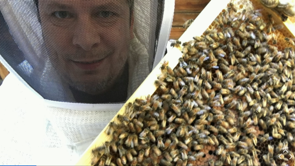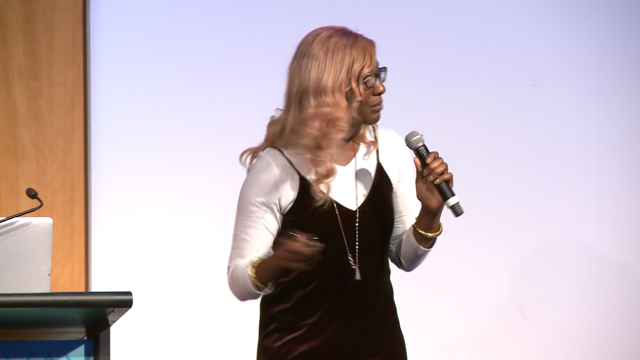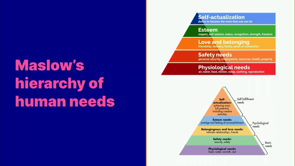
(upbeat music) - So, extreme cooperation of super organisms, four lessons humans can learn from bees.
As you can see from the title, this is an unusual talk, and I wanted to encourage you to kind of, lean back and relax and enjoy.
This is going to be kind of unusual but I hope that many of you will be able to relate to this. Given that this is part of a web themed event, I put up a QR code, this is something that you can use to follow along the presentation.
If you just point your phone camera at the QR code, you will see the whole presentation live as I am stepping through it, or if you miss this, then bit.do/superorganism, and I hope this will work, this is a first for me, so I'm curious how it goes for you.
So what I'm going to share with you is a true story, it's a story that happened to me, I was around my early 40's when I realised that while I do have an amazing wife, beautiful two kids, there was something missing, there was something that I really wanted to do, something I really wanted to learn and get deep into, and after months of thinking and going back and forth, I did find it.
I figured out that I wanted to learn how to fly a plane. I still today don't believe that something that's heavier than air can get up in the air, I wanted to learn about radio, I wanted to learn about physics, and how it all happens and as any good husband would do, I took the idea to my wife, and as I was explaining it to her, she was paying attention, her reaction, unambiguous reaction, as I finished my pitch to her, was no way.
She was, there was no question about that, and I knew it right away, that she was worried, she was worried about my well-being, being up in the air like everything comes down that goes up, and you don't know how you come down so I envisioned that this is what she has in mind. She didn't want me to land on a freeway when one of the wings breaks off, but no, that's not what she had in mind.
While this is the image that I had about flying, this is the one that she did.
She felt that it's just unethical to fly around left and right, when you have to fly, you do fly, but when you don't have to fly, you are not wasting all sorts of resources and polluting. So needless to say I was devastated.
I was like, well, I did put all the thinking and all the energy into this, what are we going to do now? So the smart, or the only thing that came to my mind was maybe we can make a deal and she was gracious enough to accept a deal and the deal that I proposed to her was, okay, you vetoed my awesome idea, how about the next idea that I come up with you are going to accept it and she said, okay, blindly, I'm going to accept whatever you come up with. So that's quite a wife, huh? So that's how this all started and it's not growing sunflowers.
It's the bees on the, on the flowers.
The rest of it is history.
I have a handful of beehives in my backyard, have had it for about five years and on the one hand, it's really liberating to be with the bees but also it's an extreme learning curve that you go through, partly how you are dealing things at a practical level, but also learning about all the science and all the research that how bees behave and all the things that they do.
So today, I wanted to take you on a journey here, show you some of the truly incredible things that bees do, how they behave, how they get together and they make incredible decisions and then at the very end of the talk, I'm going to offer a couple of ideas, what we have tried or we are attempting to do, to learn from the bees and apply some of this knowledge.
So I flew here from San Francisco, I'm really thrilled to be here in, back in Sydney, but I know it's hard to tell from my accent, but I was not born and raised there.
I was born and raised in the country, in the city, on the street where and when the Rubik's Cube was invented. Anybody wants to take a guess where that was? What country? Not Russia, very good, not Russia.
It's an Eastern block country.
Hungary, that's it, who was that? Because as any proud Hungarian, I happen to have a Rubik's Cube with me.
This is your prize, so I'm going to put this, this is the best cube I found that I think, I've been playing with so I can hand it to you, that's your gift, enjoy.
So every time we are in Budapest, we are driving on the street and I'm showing my kids that this is the place where the Rubik's Cube is coming from.
I started my career at Oracle.
I spent there about 10 years and I was focusing on early days of the web. I was running product management for Oracle's portal products and those were the days when Oracle was acquiring companies left and right, so we had more portal products within our portfolio then the rest of the industry combined and then after a while I had enough of Oracle and I went to a start-up in Mountain View in Google Town, Google city, where the company pioneered a technology that's there in every browser, on every desktop device today, the websocket technology, and what websocket is all about is communication, getting data back and forth.
I was part of the team that wrote the industry's very first book on websocket and this was a time when I was doing a lot of developer advocacy and developer relations, and built a team of developer advocates at the company but these days I work for a company that has a logo like this.
This was created in the 1980's and if you guys kind of try to figure this out, what would this be? This is an eye, this is a honey bee and this is a letter M. So it doesn't get better then when you work for a company that has a honey bee in the centre of the logo. So much so, that this is something that we put on swag and t-shirts and whatnot.
So as you all know, there is no real good presentation without strip acts.
I'm going to prove it to you now, so here we go. This is the IBM t-shirt that our developer advocates are on stage with every day, and even better their internal campaigns going on about diversity and acceptance and welcoming the be equal campaign, having the equal sign in the middle of the bee, it's truly heartwarming.
When I first saw this, I was, I was really blown away, quite something.
So today, I run a technical developer advocates, teams of developer advocates around the globe. We have identified 10 strategic cities from San Francisco, New York, San Paolo, all the way to London, Amsterdam, Berlin, Tel Aviv, Dubai, Tokyo and Bangalore. Unfortunately Sydney in Australia is not on this map, but hey, I'm here, so again, that's pretty cool. The entire presentation is online.
So if you manage to take a snapshot of the QR code, then you can see it but here on the bottom, if you just go to slides.com and search for my name and the word superorganism than you find it. Okay, so the title of the talk is extreme cooperation of superorganisms.
So first, we are going to take a look at what the term superorganism means.
This was the first question that my daughter asked me when I told him what I'm going to give the talk about. Her second question was what, what extreme means but anyway, so cooperation is going to be step number two, the extreme cooperation is going to be step number three, and then eventually we are going to get to the point of what are the things that we can possibly learn from them. So here's the dictionary definition of a superorganism, and I highlighted the important words for you to make it easier, it's a group of organisms which behaves like a single organism.
So we are going to go onto this journey, but before getting there, we need to learn a little bit about bees, so lets just do that.
Bees started their lives, or their, their branching off of wasps about 100 million years ago, these were the days when there were not a lot of flowering plants and pollination was happening primarily through wind, and the way I imagine, one day a wasp was sitting out there, was waiting for another insect to come by that she could eat but nothing came so eventually she tried the pollen and the nectar that the flower was producing, and it wasn't too bad.
So slowly they started on switching over into a vegan, vegetarian diet. There are two things that bees like to use from flowers, one is nectar.
This is a very sweet liquid and they use this, they produce honey out of this as you would have guessed and they use it for energy and pollen, pollen is the protein that they use.
Later on, we are going to talk about why they they need to collect all that honey, and why they are creating the honey for us, and as we know so well, they are working very closely with the flowering plants.
So there are three flavours of bees in a beehive, the first one is the worker bee, this is the bee that you see out there flying on the flowers, this is pretty much the only kind of bee that you would normally see.
A typical colony has about 10 to 80 thousand of these worker bees, so there's a lot and they have to have to reach a critical mass in order to be able to produce the surplus so that they can, they can survive.
A small colony is by far not as strong as a large colony as far as chances of survival.
All the worker bees are female and they have a relatively short life span, they live about six to 12 weeks.
Depending on what season of the year it is, they, in the summer they have to have, they tend to have a shorter life span, in the winter longer, and the main reason for that is because in the summer they need to fly around and flying onto flowers take a big toll on them, especially on their wings, and their main purpose and their main job is to collect resources and they do this in the last three weeks of their lives. So they fly from flower to flower and they collect the nectar and the pollen from the flowers. Before that, actually, they are going through a graduation process and as they emerge, as they are first born, their first job is to feed the little ones, the larva, and clean out and then they get the job of schlepping the pollen and the nectar from the entrance of the hive, all the way to the back and then eventually they graduate into guard bees, they are guarding the entrance and then last but not least, they do their orientation flight, that means they fly out and they are buzzing in front of their tree trunk or their bee hive, they memorise, they do the imprinting, and then that will allow them to fly three to five kilometres away and collect all the resources. So this is the worker bee, the worker bee that makes the majority, the overwhelming majority of the hive, there is one special female bee, the queen bee. The queen bee lives about three, four years but there is recordings, or recorded history of queens living for five, maybe even six years.
The very first week of her life, she goes out onto a mating flight, and during the mating flight, she mates with 15 to 20 drones, and she goes through a well-defined area called a drone congregation area, drone is the male bee, we're going to learn about him in a moment, sorry, and, and that means that this is the only time she mates and then all the sperm that is collected at this time will have to be kept alive in her body for three to four years, because she's going to use this to inseminate the eggs. Then she goes back into the hive and within a week or week and a half, she's ready to start laying eggs, and she lays 1,500 to 2,000 eggs every day. That is equivalent to her own body weight.
So just imagine, there's a chicken that lays eggs equivalent to her own body weight, or if we give birth equivalent, every day, equivalent to our own body weight, it's pretty, pretty insane.
The world of insects is quite, quite unusual, but she does that so if you ask me, maybe a better name for her would be, she's not really the queen of the hive, in my mind, she's more like the slave of the hive, she's the one who really keeps the hive and the colony going.
So then the question is how does a queen develop versus a worker bee? The interesting thing is that when an egg is laid, they are identical, the only difference between a worker bee and the queen bee is what they eat in the first six days of their lives.
A queen bee gets fed royal jelly, worker bees are fed honey and pollen.
So for a long time people thought that, well, royal jelly must have some very special material to it and very special in there, just about two or three years ago, research came out that showed it's not what is in the royal jelly, but what is not in the royal jelly. So studies have shown that if you are not feeding honey and pollen to the bees, you're feeding them something else, they turn into queens.
So it's the withdrawal of the suppressant material that's in there.
So even today we are learning an insane amount about them. The third kind in the beehive is the drone, the drone is the male and his sole purpose in life is to find a mate.
So he's flying around in a drone congregation area and as you can see, he has huge eyes.
We'll see in a moment we can compare them, but that's his main characteristic.
He's kind of chubby and he's bigger and there is only a few hundred per colony. The colony has to reach a certain level of strength in order for it to be able to produce the, the male's, the drones and what is special about him, as far as genetics is concerned, that certain eggs, the queen decides not to fertilise, an unfertilized egg turns into a drone.
So that means that drones are genetically identical to the queen but they only have half the chromosomes then the worker bees, pretty amazing.
If he cannot mate, eventually in the fall the hive kicks him out because all he does is he enjoys and eats the resources in the hive and in the fall there is no more need for drones, so they are eventually probably eaten by wasps. So that's what men do in this society and here you can see the three side-by-side. You can see that the queen is about 50% longer, has an elongated abdomen in the middle then the worker bee on the very top and on the very bottom you see the drone with the huge eyes that, that he has.
One more interesting thing is that after mating, the drone falls down and dies and the main reason or the reason for this is very similar to why bees die when they sting us.
Bees have barbed stinger and when they sting us, that whole stinger is ripped out of their body along with their, with their abdomen and then they die. Same thing happens to the drone but not when it comes to stinging but when it comes to mating, they have a barbed tool that kind of destroys them after mating, it's a pretty majestic death, isn't it? Okay, so now that we know, we have a crash course on bees, it's time for us to see them, how they live. So, what you see here is a comb, it's a pretty fresh comb, you can see the hexagon shape cells and you see the bees on them, and most of the bees look alike, but there is one that's kind of special, can you tell that there is one that looks different? Yeah? Anybody? Yeah, there is one there, right? That's the queen.
Okay, so this was the 101, let's go to 301. This is much more like what it looks like when you take a look at the comb and the bees on the inside, but I made it easy for you because this is a still photo. Normally they are moving around like this so it's a lot harder.
So, they all look very much the same, but to make it easier for us, I'm going to zoom in to a, to this part, and I hope that you can spot some of the bees, look different, so this one is kinda different, and this one is a little bigger, yeah? So, these are drones.
A hive has a handful of drones, typically, and here we see three of them.
These are the drones, but then where is the queen? Well, the queen is kinda hard to find here, let me help you, the queen is on the left third of the image.
Can anybody see the queen? Okay, I'll zoom in again a little bit.
Here she is.
Okay, you can see the elongated abdomen and she's sitting there still, so it's very easy to find her.
Okay, so we know that we depend on bees because they help us make fruit, any fruit and vegetable, that is, that uses pollinators is very much dependent on honey bees, and a lot of other pollinators, so there are thousands of different species, pollinators, European honey bees, Apis mellifera is a very special one, and that's what I would like to talk about a little more. So, a bee starts its life by a queen laying an egg, and what you see here is the cross section of a comb cell and this is what the egg looks like, and after three days, the egg hatches and a, and the larva emerges, so what you see here is a couple of a eggs here, there's an egg here, and there are the young larva here, and you can see that all the larva are swimming in this translucent kind of, jelly, and that's, they're well fed, and you can see the older larva over here.
Typically, right next to the larva, their, larva there is pollen, this is a pollen that, that the bees processed, it's fermented pollen, and it's often referred to as bee bread, this is a protein that they need to raise their little ones, and after the larva goes through a maturation process, they cap, they cover the cell, and you can see that these are somewhat bigger cells, these are drone cells, they, it takes about 12 days for them to hatch as a worker bees, from this capped state, and this is what a bee looks like when it's chewing herself out of of the cell, you can see that their sisters are helping them and you can see the tongue here, the tongue is probably the most important organ of the bee, that she uses throughout her life.
So now that we know a little bit about the bee individual, what is it that bee's really need to have a chance of creating and forming a superorganism? An organism that is made up of many bees.
So what do you think the number one thing is that they need to be able to do to build a superorganism? Sorry? Exactly, communicate, look what I have for you. This is an IBM swag, that, this is not because of me, it's, I just found it somewhere, so I figured this would be perfect today.
Exactly, communication is the number one thing that they need.
So, the question is, how do bees communicate? There are a number of ways how they communicate, I'm going to talk about two of the most important ways. First one is through smells, smells or pheromones is the fancy name, they release these chemicals and they share information. The first one I wanted to talk about is the Nazanov pheromone, this is something that you see very often when bees are lost.
Maybe the tree falls and, and the bees are out there or maybe there's a storm and the hive falls over or a bear comes, they are lost.
The first thing that they do is they advertise where they are, they basically put up their backs and they start fanning and they released a Nazanov pheromone and that sends the information, the notion that we are here. Alarm pheromone is another very important one, is when they sting you, in addition to it, in addition to it hurting quite a bit, they also release a smell, this smell is resembles banana smell, so before going into bees you don't want to have a banana smoothie and that means that a sting serves for all the other bees as additional target.
So there are kinds of bees that are more defensive, some like to call them more aggressive, Africanized bees. I don't believe you guys have it here, maybe you do and that means that they know where to go and where to attack.
The bees we like to keep in suburbia are peaceful bees and they are not really switched on when they smell the alarm pheromone.
The queen pheromone is another very important one. The queen constantly releases her pheromone and all the bees carry it throughout the hive and that tells the colony that the queen is alive and well, and as soon the queen dies, something happens to her, maybe a bird eats her, maybe, maybe she's stuck somewhere, maybe the beekeeper accidentally squishes her, within an hour the colony knows that the queen is dead. Then they go into fallback mode and they emergency mode and they need to figure something out because a queenless hive means that it's the dead, it's the, it's the death of the colony.
In addition to this, the brood is releasing pheromone and has its own effect, the drones are releasing pheromones as well and all of this information controls the behaviour and guides the behaviour of the colony.
The second kind of communication that bees do is, and let's hope that our connection is going to work, is the waggle dance.
You have probably heard about the waggle dance. Until I saw this video, I haven't really seen it and then I observed it on, on, in my hive on the, on the frames I see it, so you see that there's this bee that's kind of turning around and coming into the straight and then she starts waggling and she gets really excited and what this does, it shares, encodes a lot of information to all the other bees, look at how the other bees around her are watching her, what she is doing.
So there are three major pieces of information that she encodes here.
The first one is there is some food out there and the distance is proportional to the length of her waggle, the straight section, then the direction of the, maybe we can go to the next one, the direction of the food source is, has the same angle, so basically the comb is hanging in the hive and then there's an angle relative to the vertical, so if that vertical is adjusted to where the sun is as they get out of the hive, it's the same angle where the food is.
One second of waggle is about one kilometre away, and the third one is how intense the dance is, it describes how good that food source is.
So what happens, there's a bee that finds something interesting, that she really likes, she comes back, she dances and then those that are paying attention go out and they check it out and when they find it, they come back and they start advertising as well, and then all those that are watching those are going out and come back and advertised as well.
So this is kind of an exponential snowball effect and that's how the hive has the ability to move, the colony has the ability to move from one resource to another and we have observed that within about an hour, hour and a half, when a new source becomes available, they have the ability to switch over to that, so they have this a pretty incredible way to, to adjust their behaviour.
So when you think of a single bee and their colony, you can't help but think of other examples where throughout evolution the notion of cooperation resulted in something more involved and more complex and the contrast of single-cell organisms and how they eventually became into multicellular organisms gave a higher level of complexity as far as functions are concerned for them, and the same kind of thing is happening with bees. The extreme cooperation of these bees turns them into something bigger and something more complex, a superorganism.
So let's see what this really means.
How does a colony of honey bees, that is made up of not very smart individuals as a unit, as a superorganism, turns into something way more complex and way more sophisticated? The first example I wanted to give is the notion of body temperature, higher level organisms like mammals do have a constant body temperature, believe it or not, the centre of a beehive and a colony has constant temperature as well, and the temperature is pretty much the same as our own body temperature.
It's around 34, 36 degrees centigrade.
What this means is that when it gets cold out there, they need to heat and the way they heat, is that they eat the honey that they stored in the, in the summer and then they move their wing muscles, they shiver it and that's what generates the heat and they have the ability to generate the equivalent of about a 40 Watt traditional light bulb inside the hive and that's how they stay warm. Now that raises a number of questions.
First of all, they have to have the ability to, to heat, so that's why, that's why they collect all the honey, but then it also raises challenges of condensation, of water, so when it's cold outside and it's, it's warm inside and they have to deal with the condensated water, they have to make sure it doesn't drip back onto them, they have to set up a ventilation system inside and they are busy doing that when they are building their colony.
They are using about, they're eating about two kilogrammes, 20 kilogrammes of honey in a winter and average a hive and that's what they use in a more like a European landlocked or Russian, Siberian, or U.S landlocked cold winter.
Another problem that they have is that in the summer it can get hot.
So what do you do when it gets really hot? You don't want to fry your, your babies, they have to cool the hive.
So they have to find water source, they bring it back to the hive and they evaporate the water and that's how they cool it.
So just like we are sweating, they are controlling their temperature, their heating, their cooling.
Sometimes the Co2 level within the hive gets too high, so they need to address that, what do they do? Well, they turn into fans.
They sit outside at the entrance of the hive and they start fanning and it's really interesting, partly, they leave the hive and hang out outside and then they, they are doing a lot of fanning and that's how they increase the ventilation inside the hive, or when there is an infection in the hive, there is a fungal infection in the hive, what they do is they elevate the temperature inside the hive and while that, that may not be ideal for the little brood, it is something that helps them fight the infection, is kind of a similar behaviour what we do when we get fever, and the last example I wanted to give you is we have the ability to walk and individual bees have the ability to fly, but as a group when you have tens of thousands of members, how do you ensure that you are kind of moving together and where it becomes really interesting is when you are swarming and I'm going to talk about swarming in a moment. We don't perfectly understand how they are doing this, how they keep together, simply because and I'm going to tell the story, they don't know where they are eventually going. There's a handful of them that leads them, but this whole notion of leading is a challenging concept. So we have some ideas how they are steering all the, all the bees as the colonies moving into, into their new home, not fully understood.
So here is a longer list and more exhaustive list of all the things that they do that we are used to seeing in larger, more complex organisations, they ingest and digest the food so they go out nectar and pollen, turn it into honey and turn it into bee bread. They are exchanging the respiratory gases, they regulate the water content, they control the body temperature, they are moving, they are achieving locomotion and so on and so on. So all of these things resemble a complex organism. So we got to a point where we need to talk about the most exciting thing about bees, that I think that we have seen so far and that's the notion of reproduction.
In the beginning I showed you how a queen lays an egg and then the bee emerges and they go through all stages of graduation but what is really exciting is not the birth and the death and the life of a single bee but of a colony. How does a colony reproduce? The reproduction of the colony is the swarm. So what is swarming? Swarming is when the queen in the hive leaves the hive with about half the bees and they're, they hang out on a tree branch and they sit there and it's going to be their job to find a new home. All the bees that are left inside the colony, inside the tree trunk or inside the hive, they are raising a new queen, actually multiple queens and then the queens eventually find out who will be the new queen inside the hive and, and they become the sister colony and as they are sitting out there on the tree branch, they need to decide where to go.
So how do they decide? Would the queen tell them where to go? The queen has no idea.
The queen has been out there a year earlier or six months earlier on a mating flight or two or three and that's it, she has no idea but the colony has experienced foragers, those who are spending their days out there on flowers and they, when they have some time, they check out all the cavities and all the, all the holes out there and they have a basic understanding and during this time when they're sitting on the tree branch, they go out, they double check those places, they come back and they discuss where should we go? So, how does this all work? It's critically important that they find a place that is, from a size perspective, ideal.
It cannot be too small because then they cannot store enough honey in the cavity and it cannot be too big with a big entrance because then it gets too cold, too windy, the bear comes and eats it, so it, from a, from the future of the hive, from the hives future perspective, it's critically important that they find the right size, and while the queen is the genetic mother of all the bees inside the hive, she has no say about where they go or what they do whatsoever.
It's the worker bees that decide it and they fight it out, and I think this is pretty impressive on the very bottom, that bees do not need a boss to work.
They have this instinct that they need to do the right thing and let's see how this all hangs together.
So the foragers, those that spend their lives out there on the flowers, they are going out and in a about a 70 square, square kilometre area, they evaluate the options and then they come back and then they advertise it and they use the same waggle dance that we saw in that video, the bee comes back and advertise it at hey, here is a location, this is the distance, this is the direction and this is my rating of the place and let's say they use a one to 10 rating, and they have an absolute scale.
They look at the place and they say I found a place rated six on a one to 10 scale, I found a place rated nine on a one to 10 scale. They don't have an agenda, they don't have, they don't have any pride, they share what they found and this is pretty amazing, that they have this absolute scale that, that tells how good this place is and after they went out and came back and advertise it, as you would guess, those who are paying attention are going to go out and check it out as well and when they come back, they will give their assessment and they tend to give a very similar assessment and slowly but surely, the information, the notion that there is a place where we can move in, kind of takes over and in about 90% of the cases, they end up choosing the best place available. The way this research was done is truly fascinating. Researches went on to an island where there are no bees, no trees, and they took colonies there.
They created some artificial swarm and they put out some boxes and they monitored the dens on the, on the, on the hive and they basically could interpret, they understood what the dance meant and which place they are advertising and how the hive is moving back and forth between the various options.
So, the way they do this evaluation is they go out to the place, they spend about half an hour to an hour at the place and they check it out, and to me, one of the most fascinating thing is how they measure the volume of the cavity because that's, that's very important for them. While they are flying around in the cavity and depending on how long it takes for them to fly from one side to another, they kind of average it out and they have a ballpark understanding of how big that, that cavity is.
So scientists had to use like, little tricks that tricked them into, they used a cylinder shaped cavity inside and then they rotated it and they basically they figured out that it's the flying and the time they spent in the air is what, what helps them define the size of the, of the cavity, and then they come back, they advertise it and then they return a couple of times and then eventually they retire.
So if, if my place that I suggested does not win, I'm fine with that because, by definition, I need to retire after awhile and I'm not advertising anymore and if all the others that's checked it out and they find it good enough, they will take care of it and they will advertise it.
So here's a list of things that they really care for, the size of the entrance, they like to have it small rather than big, the direction, they like to have it's face south rather than north, the height, they like to have the place pretty high up, again, to protect against predators.
They like to have the entrance on the bottom of the opening, not on the top.
So if there is a hole on a tree branch, then they would like to have the cavity above that, the size of the cavity, ideal is around 40 litres, but they are kind of okay between 10 and 100 and that's what kind of still works for them and the last one is very interesting, has there been any other bee activity in that cavity? If some other bees have lived there before and they have some comb left there, then that's proof, that's reassurance, that's similar to a who else, who, what companies did this person work for and that's kind of a reassurance that they went through a hiring and interview process there, so hopefully my chances are better there.
Now the interesting thing about all these things is that beekeepers can use this information when they are offering bee's boxes to move into. So there are number of ways how you can get bees. You can buy them and in the U.S at least, you can get them through mail, but the best way of getting them is convincing a swarm to move into you and by doing so, if you follow these guidelines, then your chances are better that they move in. Another trick that I did not list here is, when you have comb in there, then chances are that smell is pretty strong in there. So if you can put some pheromone in there to trick them and say oh, maybe a couple of weeks ago, there was a, there was a colony in here so putting some queen pheromone into the, into the box helps as well.
So, I think we have seen quite a bit of a thoughts and ideas about the bees, so I wanted to share a couple of closing thoughts on what we can learn from them.
We have seen that bees are participating in this home hunting endeavour and they have common interests.
They want to get their gene pool to advance. They are building consensus as they are deciding where to move, so what's happening as they fly back onto the tree branch and they are dancing on the, on the tree branch, slowly they are levitating to, to an ideal option and that's what they want to do, but there is no guarantee that there are no multiple options or multiple choices out there.
Bees do not have a, have the ability to stay on top of the whole communication globally, all they can see is what's happening around them, so they have to have a system that kind of concludes in a meaningful way.
In contrast, people tend to have differing interests. We have, we are very strong-headed and strong-minded and we very often prefer the majority voting rule. Everybody has one vote and then, then we vote accordingly. So one more interesting idea that kind of surprised me when I learned about it, is that humans are very smart as individuals. Bees are not very smart as individuals, but bees turn into something very sophisticated and complex when they turn into a, into a colony. That's not necessarily the case with us.
When we get together, we tend to have odd behaviours. So kind of common sense that first lesson, hold an open competition of ideas when making a decision based on a wide range of information spread in the team, so you have great ideas, the information is all spread out, having an open competition of these ideas is a good thing to do.
The second one is making sure that you have common interest and mutual respect within the team, so the lesson is to compose a decision making group of individuals with shared interest and mutual respect, I wanted to share an idea, or a, or a story that's within our organisation.
A few years back, we had significant challenges with the mutual respect part of this notion. So there were a lot of things that were put in place to address this and I wanted to show one of them and this is a picture I took last week before I came, a code of culture pledge and what it says is, we are, we are an open and welcoming environments, inclusive regardless of your background and in addition to having it on a wall, obviously what really matters is that this is how people feel and I'm happy to say that that's turned around and turned into something way better than it was. The next lesson is related to specialisation within the colony.
So we talked about the queen's mating flight, when she goes out she mates with 15 to 20 drones and as a result of that, the colony is made up of 15 to 20 groups of half sisters with different fathers and what this gives the colony is diversity. The genetic makeup of the colony gives it a chance to have a wide range of superpowers.
Some of them are good at fighting diseases, some others are good at cooling the colony, some others are better bringing, bringing pollen and nectar into the colony and obviously when you can have diversity, your team gets stronger rather than weaker. So here is, here are a couple of examples.
These are developer advocates on our teams. So Gama, he is in Sao Paulo, Brazil, and I think, Douglas, you are from Brazil, right? So Gama is a developer advocate who is extremely good when it comes to live streaming videos.
In Brazil, Facebook is used as a professional network, just like LinkedIn or YouTube in the U.S and he has a huge follower, whenever he's on stage he gets standing ovation. Pooja, she's in New York and she's extremely good when it comes to workshops, either live face-to-face or doing it over the web through streaming and Nicholas who's in Germany, is as especially talented when it comes to written content. He has a blog that's very popular throughout the industry and this is something that we pay a lot of attention to, to make sure that we support and we foster the various diversity and the talent within the team, and the last one, aggregate the groups knowledge through debate and make good enough decisions. Here the idea is to find ways to get the information and the knowledge from all over, from all the people, into the pool and you don't have to make the perfect decision, making a good enough decision is perfectly okay in many, many cases.
The bees are fine with that, maybe we should give it a try as well.
At IBM, we do a lot of design thinking where the entire team is looped into the ideation process and coming up with, with various thoughts, so this is one example of this.
So I listed all the lessons on this single slide, holding an open competition of ideas is the first one, second one is making sure that people have shared interests and mutual respect, third one is use the talents of the team and the fourth one is making a good enough decisions and aggregating the, the team's knowledge as we make these decisions.
So I wanted to share with you a couple of things that inspired, other than the bees themselves. The first one is the very best book related to bees that I have seen, the "Honeybee Democracy". This is a truly impressive book, written by the number one researcher around, Tom Seeley, and the, basically the superorganism behaviour aspect of the bees is incredibly well-covered in this, if you happen to be interested in getting started with bees, then the two bottom left books are good ones "Beekeeping for Dummies" and "The Practical Beekeeper". If you are more into picture books, my favourite is the "Bee's Honeyed History". This is a nicely, very nicely drawn book, but it has incredible amount of factual information and I learned a lot about bees from this book. Last but not least, I wanted to give credit to all the photo sources, where these pictures came from. I found it really fascinating and I think telling a story with these pictures is a lot easier than it would have been, so Alex Wild and the USGS Bee Inventory and Monitoring Lab have outstanding sources out there. I wish I could take half this nice pictures as they did, so thank you very much for you attention, and if you have any questions, I am more than happy to answer them, thank you. (upbeat music) (audience clapping)












